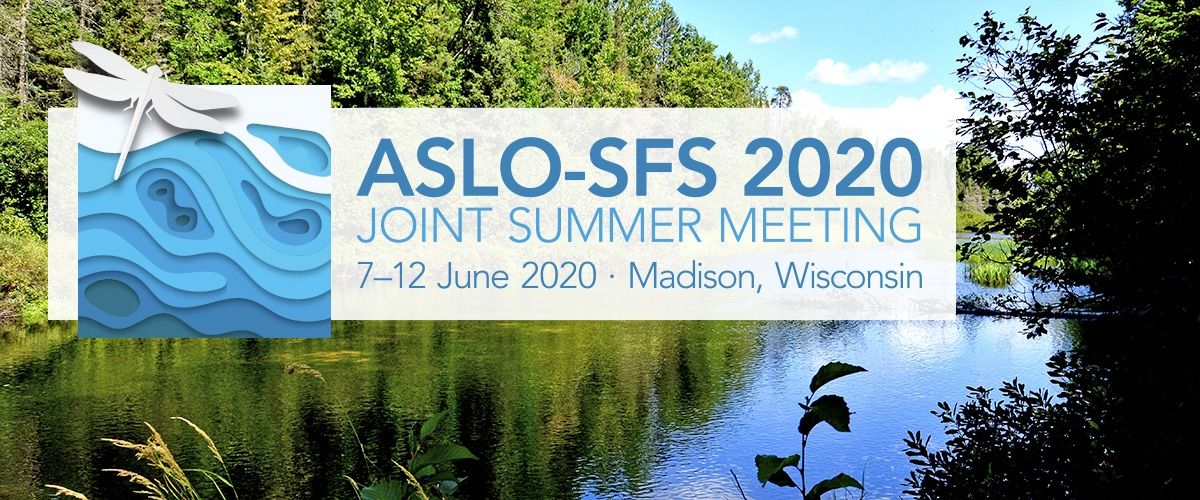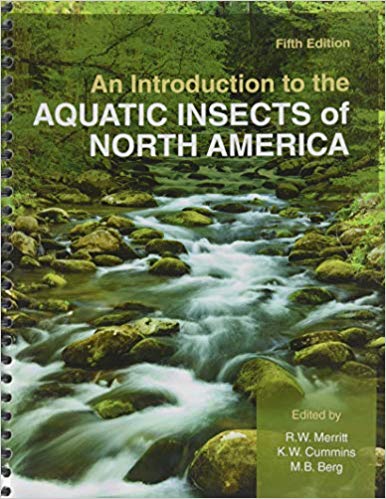In the Drift: Issue 35, Fall 2019
In this issue
- FPOM - short news and resources
- Freshwater Science Article Spotlight
- New co-editor profiles
- Dear Nick - advice from Nick Aumen
- ITD Q&A with SFS media officer Shelli DiFranco
- Remembrance of Bert Cushing (1931-2019)
- A message from our SFS President
- 2020 Meeting Announcement
- SFS Playing Cards
- Student Conservation Award
- Highlights SFS and CASS activities
- Book Review:An Introduction to the Aquatic Insects of North America
- 2019 Annual Meeting Recap
Dear Society for Freshwater Science,
Collect the latest news from the Society for Freshwater Science in this issue. We are especially thankful for all those that contributed to this issue! Make sure to scroll to the bottom of the issue to see photos from this years annual conference in the Annual Meeting Recap.
Enjoy,
Ross Vander Vorste, editor
Ali Chalberg, co-editor
Brad Morris, co-editor
FPOM
SFS news and resources collected from "the drift"
- Amy Rosemond's President's Environment
- A new issue of Freshwater Science has been published
- A new Making Waves podcast hosted by Susan Washko talking with Maureen Finnerty, Jennifer Greiser, and Sayoni Dutta about the infamous Cuyahoga River fire
- Stay Fresh! a compilation of new research in freshwater sciences
- Classifieds: job opportunities and workshops in freshwater science
- SFS 2012 Joint ASLO/SFS meeting - call for abstracts January 2020
Article Spotlight
By Ali Chalberg and Brad Morris

What the heck is a Snuffbox? Mussels are an essential part of most riverine ecosystems, yet 70% of species are endangered, including all species from the genus Epioblasma (commonly known as riffleshells). The Snuffbox (Epioblasma triquetra) are found in the Midwest, Great Lakes, and Canada. Although they are classified as endangered, there are stronghold populations in the Great Lakes. This project explained the genetic diversity and structure of Snuffbox, determining if genetic differences exist among the populations.
Caitlin Beaver, lead-author, is a Biologist for the United States Geological Survey (USGS) Wetland and Aquatic Research Center in Gainesville Florida, and Dr. Daelyn Woolnough and Dr. Dave Zanatta are faculty in Biology and the Institute for Great Lakes Research at Central Michigan University. Their article “Assessment of genetic diversity and structure among populations of Epioblasma triquetra in the Laurentian Great Lakes drainage.” focuses on Caitlin’s masters research on endangered mussels.
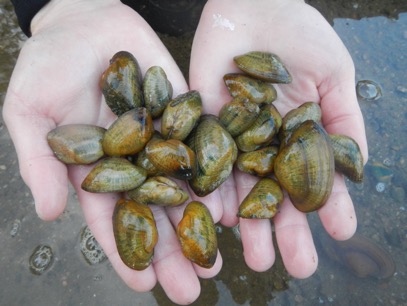
Snuffbox found in the Grand River Photo Credit: Central Michigan University
Both Daelyn and Dave have been working with the Snuffbox for many years now. This project gained funding from the United States Fish and Wildlife Service (USFWS) and the Great Lakes Restoration Initiative (GLRI), which allowed them to hire Caitlin to help them with the genetic work. Although some of the field specimens were collected prior to Caitlin starting, she still made her way into the field on numerous trips to collect samples. Field collection comes with its share of fun stories, and this trio had a few to tell! Being a Floridian, Caitlin has a funny recollection of wearing three or more layers in addition to her waders for her field day. What made this such a Floridian story is that it was a warm day in October at about 50°F (warm for Michigan in the fall). To date, this is her coldest field day. In contrast, Dave recalls a field day he had in the Grand River in Ohio where it was over 100°F. He commented on how the mussels “looked so unhappy when we found them.” Throughout the years, they have sampled in all sorts of weather conditions for this and other mussel related projects. Finding endangered mussels is not always easy, Daelyn compared it to a box of chocolates: you know you're going to find something, but when you pick it up you're not sure what it is. The idea being when you're searching for mussels, you will find some unionids, but not necessarily the endangered ones you were searching for.
This project, although conducted in labs at Central Michigan University, was not only an upper Midwest effort to study endangered mussels, but was international. Because the Snuffbox is found in the Great Lakes, they enlisted the help of USFWS as well as Canadian agencies such as Department of Fisheries and Oceans. Daelyn mentions how working internationally is helpful because you can look at more populations than just what is nearby and it can aid in better understanding the species. Caitlin commented on how important international and even national collaboration is because “animals don’t abide by political or state boundaries.”
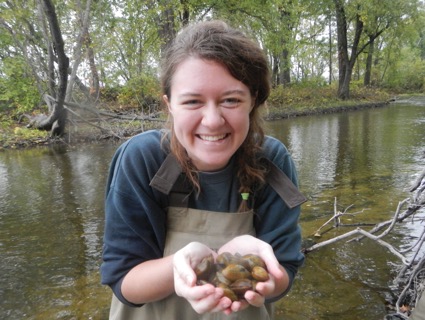
Caitlin Beaver in the Grand River holding Snuffbox Photo Credit: Central Michigan University
In our interview, the authors discussed the importance of their broad-scale study of the Snuffbox being that no one had compared the genetic structure and diversity across the entire distribution of the species. Past studies only looked at isolated populations. By looking at the genetic makeup of the whole population, the authors found three distinct populations of the Snuffbox across the Great Lakes Drainage. Snuffbox in the lower Great Lake tributaries were genetically similar, while the populations in eastern Wisconsin and western Michigan were more isolated and distinct. This finding was important because it helps managers better understand Snuffbox, and will provide guidance for augmenting and restoring come of its dwindling populations.
One of the many questions that Daelyn gets asked is, “can you take some [mussels] from here and put them there?” After the project was completed, they found that not every species shows the same genetic structure, and this is one thing that managers are starting to realize. In our interview, Dave stated that mussels are “all filter feeders ... but they have their unique niches within the ecosystem; they all use different hosts; they have different patterns of connectivity between populations … mussels should not be grouped as, yeah, it’s a mussel.” By this he means not all mussels are the same, and have different needs for survival. When asked about future projects spawning from this one, they had many ideas. Daelyn’s lab is in the process of building part of a mussel hatchery in Saline, Michigan. To start, they will be working on more common species currently, but have talked to other agencies to start work on rearing the endangered mussels such as the Snuffbox. Dave mentioned that he would like to see more research involving hatchery propagation and hope more research will go into understanding and protecting endangered mussels.
Unlike most mussels, Snuffbox are still fairly widespread. As previously mentioned, there are a few stronghold populations, unlike other endangered mussels. Dave told us they are not worried that the Snuffbox will go extinct tomorrow, but they are hoping with research and future projects “we can work to make this one a success story.”
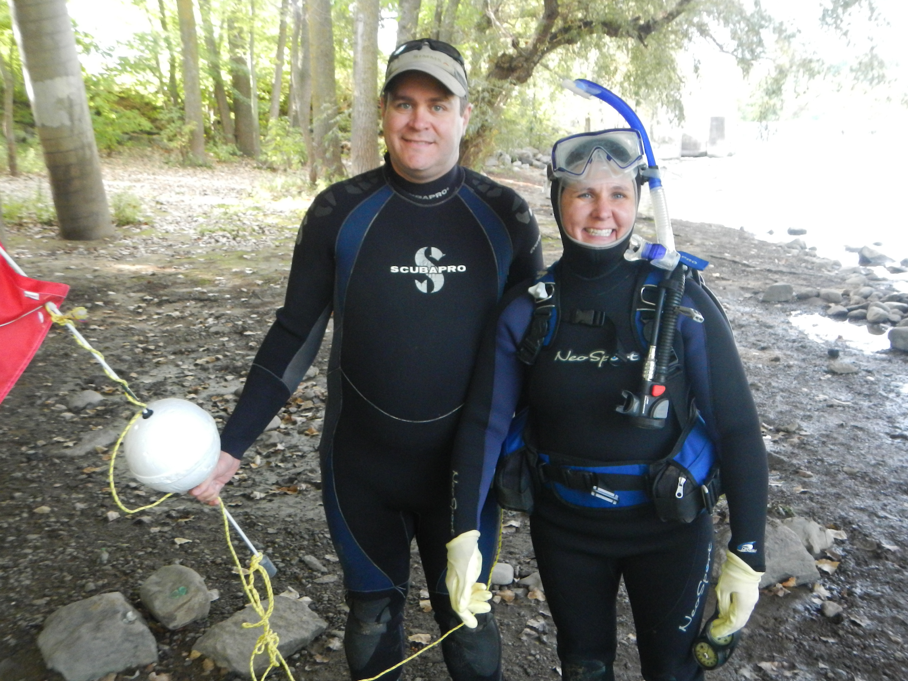
Dave Zanatta and Daelyn Wollnoagh preparing to enter the Grand River Photo Credit: Central Michigan University
We finished our interview by asking the authors if they had any advice for future field biologists. Daelyn had advice for adding to your curriculum vitae: volunteer in other labs and gain transferable skills. Skills such as data entry and analyses, GIS, and genetics are valuable to employers. Caitlin echoed this by telling us about her work with mussel DNA gave her the skills she needed to work with a diverse group of organisms, including other freshwater mussels, manatees, and birds. Dave’s advice was not to be afraid of moving away as traveling gives way to new opportunities. Caitlin agreed as she had moved from Florida to Michigan for this opportunity. Caitlin stated, “don't be afraid of the unknown” and to get out there and try something new. Dave would also like to add that you should attend conferences and join organizations like SFS!
Meet the new In the Drift co-editors!
Ali Chalberg and Brad Morris
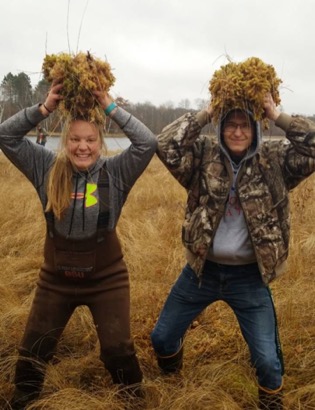
Ali Chalberg is from Cloquet, Minnesota and Brad Morris is from Morristown, Minnesota. They both graduated from Bemidji State University with a B.S. in Aquatic Biology, and are now attending graduate school at University of Wisconsin - La Crosse.
Ali will be using GIS and temperature loggers to identify coldwater streams in the Driftless Region of Northeast Iowa under the direction of Dr. Eric Strauss. Brad will be studying the effects of flooding and drying on insect emergence in the Mississippi River and the surrounding floodplains while working with Dr. Ross Vander Vorste.
Dear Nick - advice from Nick Aumen

DEAR NICK: I have always been interested in conservation. I volunteer with an environmental organization in my spare time, but wonder if SFS offers ways in which my aquatic science training can be more directly and effectively employed to address conservation issues.
– WANTING TO GET INVOLVED
DEAR INVOLVED: It is wonderful that you are interested in conservation issues, and you undoubtedly have much to contribute. Our aquatic ecosystems are under ever-increasing threats from urbanization, a growing population, runoff enriched in nutrients and/or high concentrations of pollutants, and impacts of rising temperatures and other changes. The answer is yes – SFS has a long-standing involvement in conservation issues, and there are ways in which you can get involved.
For example, join the the Conservation and Environmental Issues Committee (CEIC). Conservation-oriented society members created the CEIC in the early 1990s. One of its earliest efforts was the creation of a Conservation Resource database – a listing of society members willing to donate their time and expertise to assist environmental organizations in solving environmental problems. Another early effort (1993) was a special series in the journal’s Perspectives section featuring freshwater conservation articles by scientists and activists in the conservation community. For years, the CEIC has funded a graduate student conservation award for conservation-related research. More recently, the CEIC provides a $1,000 travel award to a SFS meeting for undergraduates engaging in conservation research. The members of CEIC raise money for these efforts in various ways, the latest of which is to sell playing card decks featuring photos by SFS members.
In addition to committee activity, the society develops position statements and letters on various topics. Its policy on science and education advocacy (https://freshwater-science.org/about/society-governance/society-statements) states that “It is incumbent upon SFS to make available its collective expertise and knowledge to educate and advocate for the use of science-based insights as a basis for decision-making.” These position statements, approved by the Board and signed by the President, can be proposed by any member or committee, and carry the full weight of all the expertise and knowledge represented by the society. Also, SFS is a founding member of CASS – the Consortium of Aquatic Science Societies – consisting of nine aquatic science societies that can now speak with a much stronger, unified voice on conservation issues than any one society alone. We also are a member of AIBS – the American Institute of Biological Sciences, and can join with them in making policy statements. The SFS provides you with helpful resources to assist in making your voice heard -- https://freshwater-science.org/about/science-policy. This newsletter also features ongoing and newsworthy events within SFS, including news and events related to aquatic conservation topics.
Finally, remember that you can always act locally by taking the time and effort to translate your own science to inform local conservation outcomes via management or policy. For example, say “yes” to an invitation to work on a kids’ STEM event or say “yes” to be the dinner speaker for a local watershed group. There always are opportunities to make your science applicable and informative for those outside the field.
One of the best ways to be effective is to become a more active member of SFS by, for example, volunteering for a committee such as CEIC, or drafting a position statement on a proposed policy or bill for consideration by the SFS Board. Thank you for your interest in protecting our precious aquatic resources!
-- Nick
ITD Q & A with Shelli DiFranco, SFS Media Officer
By Ross Vander Vorste
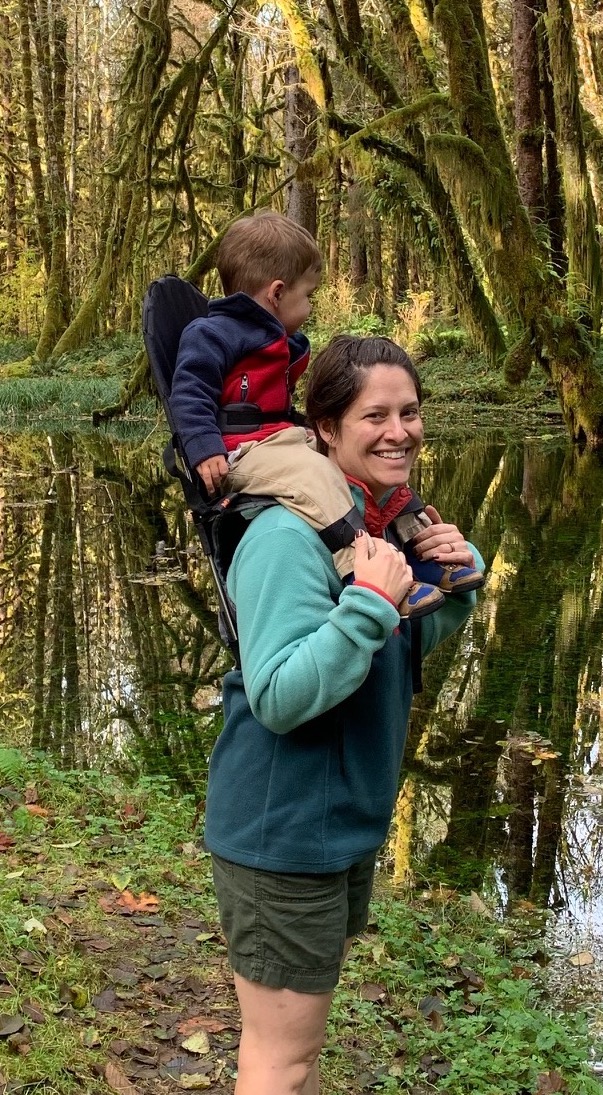
Shelli DiFranco is our new SFS media officer. Here she is posing with her son next to a picturesque stream in Olympic National Park. She's curious to know if any members work on streams in this area. Contact Shelli at webeditor@freshwater-science.org.
ITD: Could you tell the Society about your background and how it brought you to serve as Media Officer for SFS?
I am honored to serve as your Media Officer. My background is in environmental communications, though I have alternated between working in the environmental field and the private or nonprofit sectors. I most recently served as the Director of Community Engagement for a water quality nonprofit in Michigan. My family just boomeranged back to Dayton, Ohio.
ITD: Tell us about your role as Media Officer? What type of duties will you working on for SFS?
As Media Officer, I help the Society promote it’s strategic plan and key activities with the goal of increasing membership and engagement. In addition to managing the SFS website, I get to work with the members who are leading various communications channels, such as our podcast and enewsletters. I am also beginning to work with some of the committees, like the policy committee, that may have a need to share their work outside the walls of the Society.
ITD: What goals have you set for yourself or has the Society provided you related to your position as Media Officer?
Ooh, goals are a good question. I started my role in September and am still getting the lay of the land. I’m formulating my specific goals, but in general, I would love to see our membership grow by bringing in students, scientists, communicators, and professionals working in the field.
ITD: What impresses you most about SFS and why are you excited to be a part of this Society?
I have been impressed by so much already! Your passion for the field and seeing how it connects to people’s everyday lives has been inspiring. I am excited to be part of the Society because you are an incredible group of people working on critical issues.
Remembrance

Bert Cushing (1931-2019)
By By Arthur Benke, Steve Thomas, G. Wayne Minshall, Christopher Robinson, Eric Snyder, Todd Royer, Denis Newbold and David Allan
Colbert E. (Bert) Cushing, long time NABS-SFS member and former NABS President, passed away September 9, 2019 in Loveland, CO. Bert is survived by his wife of 60 years, Jackie, 3 children and 10 grandchildren. He loved his home state of Colorado, being born in Ft. Collins in 1931, receiving his BSc in Fisheries Management (1952) and MSc in Zoology (1956 ) from Colorado State University and living his retirement years in Estes Park. In between his Colorado years, Bert spent two years with the Montana Fish & Game Department, and then attended the University of Saskatchewan where he received his PhD in Biology (Limnology) in 1961. Shortly thereafter he began the rest of his career (35 years) studying various aspects of stream ecology as a Senior Research Scientist with Battelle Pacific Northwest Laboratories at the Hanford Nuclear Reservation.
Bert’s early work at Battelle emphasized the relationship of Columbia River organisms and radioactive elements introduced into the river by the nuclear reactors. After the reactors were closed, his interests broadened to include more theoretical studies on streams throughout North America with professional colleagues from various universities and laboratories. While he published more than 100 papers over a period of at least 5 decades, his best known contributions are his collaborations on the River Continuum Concept (Vannote et al. 1980, Minshall et al. 1983, 1985). But Bert’s published papers are just a part of his many contributions to the science of stream ecology. He edited or co-edited seven books, and wrote five books. Of particular note are “River and stream ecosystems of the world” (edited by C.E. Cushing et al.), “Freshwater ecosystems and climate change” (edited by C. E. Cushing), “Rivers of North America” (edited by A.C. Benke and C.E. Cushing), “Field guide to rivers of North America” (edited by A.C. Benke and C. E. Cushing), “Streams: their ecology and life” (C. E. Cushing and J.D. Allan), and “Streamside: the science and beauty of rivers and fly fishing” (C. E. Cushing). The latter 4 books highlight Bert’s dedication to the importance of informing lay audiences about the beauty and importance of streams and rivers, how they worked and why they need preservation.
Bert continued to lecture and teach in a variety of ways well into his retirement. Along the same lines, Bert published popular articles on stream ecology in Colorado Outdoors, Trout, and The Quill. He taught at Washington State University, the Yellowstone Institute, Rocky Mountain National Park, and held an Affiliate Faculty appointment at Colorado State University and was a beloved and respected member of Idaho State University’s Stream Ecology Center.
In addition, Bert was an avid fly fisherman and the lead content provider for an America On-Line service provided through Trout Unlimited entitled "Ask Dr. Cushing." He was frequently asked all sorts of fly-fishing questions, many of which were answered in his books.
Bert was an active member of several professional societies, but NABS (later SFS) is where Bert was most at home. He was a fixture at our annual meetings well after his retirement. He served NABS most notably as President in 1994-1995 but contributed to the society in many other official and unofficial ways. For many of us, Bert epitomized much of what’s great about our society. He was warm, quick to laugh, and above all else, humble. He was patient and always available to talk to a colleague, or students hoping to become one. Bert was sharp and had the most pleasant way of letting you know you were wrong or headed off the path. Bert’s personality and leadership played an important role in the development of our society and the values we hold dear.
A message from our SFS President
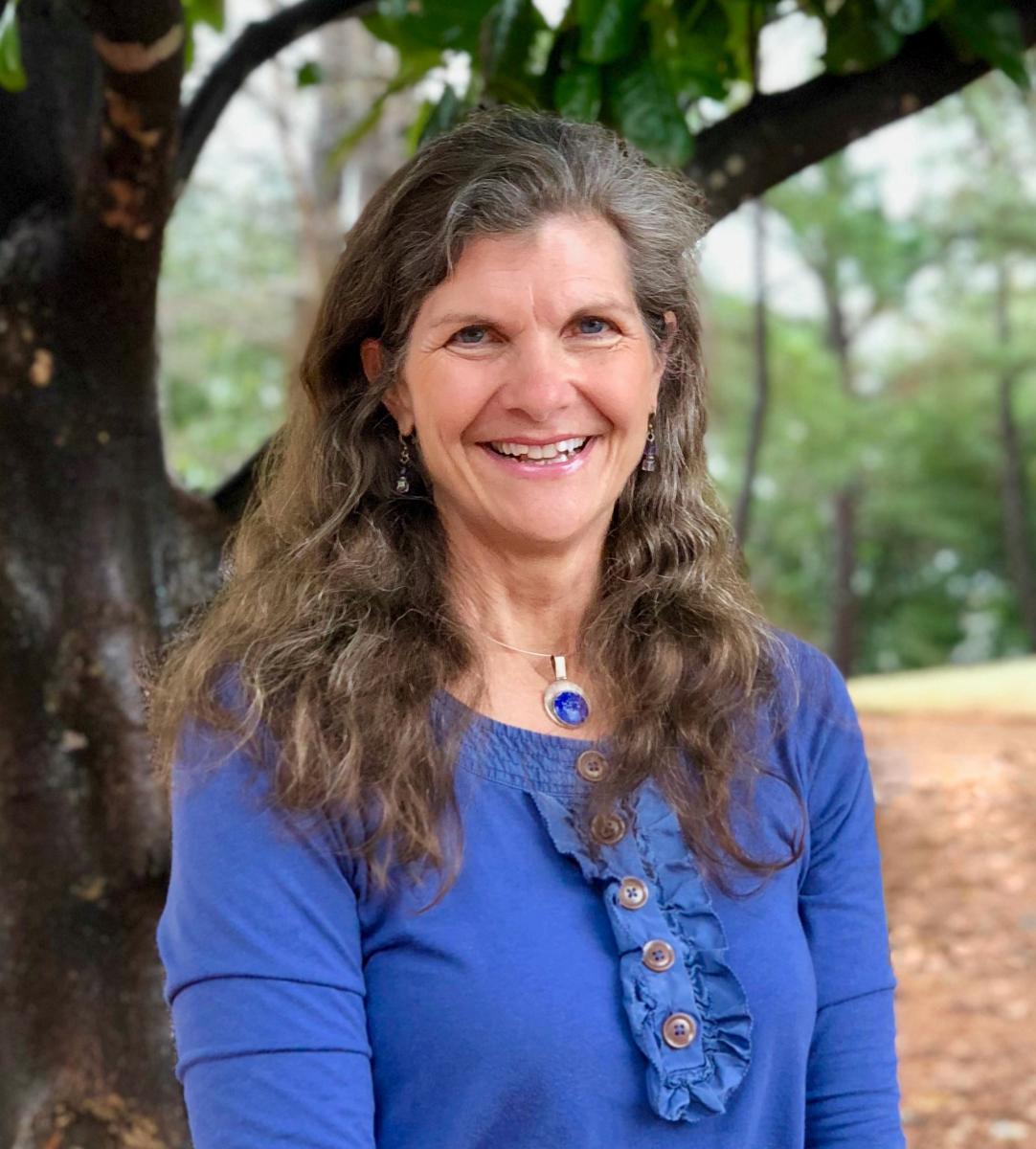
Sad losses from our Society
As you may already be aware, we have lost two beloved benthologists and freshwater ecologists in the past few months, Dr. Bert Cushing and Dr. Scott Wissinger. See Bert's remembrance (above) and his obituary. Scott's obituary is here. Also, sadly, Marcelo Ardon lost his dear wife Erin Linquist to cancer in early August. The families of all these SFS members are in our hearts.
-- Amy Rosemond
Please mark your calendars for our 2020 annual meeting 7-12 June in Madison, WI, which will be held jointly with the Association for the Sciences of Limnology and Oceanography.
The theme is ‘Sustaining Aquatic Ecosystems Under Global Change.’ Please check out the meeting website and make your plans to attend now!
We’ve already had a tremendous response to our call for special sessions earlier this year and organizers are busy planning fun and engaging activities for all attendees!
Abstract submission and registration will open in early 2020! Because this is a joint meeting, you will not be able to renew your SFS membership as part of meeting registration; please make sure to renew your SFS membership early so that you can take advantage of the reduced member registration.
This year, abstract submission fees are required to cover the meeting cost. SFS student members will receive a waiver of that fee as part of their paid 2020 SFS membership.
Your society is also getting a head start on planning for the 2021 annual meeting in Brisbane, Australia. This will be another joint meeting in conjunction with the Australian Freshwater Sciences Society and the New Zealand Freshwater Sciences Society..
Our amazing group of SFS Fellows and others have been working hard to raise funds to support travel for students and early career members. Stayed tuned for more information on this amazing opportunity to attend an SFS annual meeting down under, network with fellow freshwater science students and professionals from Australasia and beyond, and experience Australian freshwater systems first-hand.
-- Andy Leidolf (SFS Executive Director)
Society for Freshwater Science Playing Card Deck
This project will celebrate photographers in the SFS community, and selected photos will be used to create a deck of 54 playing cards to be sold as a fundraiser for student travel awards. If approved by the photographer, each winning photographer's name will be printed with the image.
Submissions will be accepted from now until December 31, 2019. Decks of playing cards with the winning images will be sold at the June 2019 SFS-ASLO Joint Meeting in Madison, WI and potentially through other channels to increase the funds available for student travel awards.
Rules:
- Only three (3) photos per participant can be submitted
- A title or caption must accompany each photograph. Please be descriptive about organisms, environments, and behaviors.
- If deemed appropriate, submissions will be automatically included in the SFS image library, and freely distributed through SFS web site for educational non-profit purposes.
- Submission of your photograph(s) indicates that you agree to the above terms (Item 3) and the following terms: You are giving SFS a non-exclusive right to use and distribute your image(s) on the web, and everyone the right to use your image(s) for educational non-profit purposes. Each photographer's name will be printed with the image, with their permission.
- Submissions, with captions, are to be emailed to Steve Rier (srier@bloomu.edu) before midnight, December 31, 2019.
- The photographer of each image selected for inclusion in the card deck will be notified by February, 2019.
Submitted digital photographs must:
- Show a freshwater organism
- Be in .jpg format
- Be in “portrait” orientation
- Be in the highest resolution that you have in order to minimize blurring when reproduced
- Be in sRGB color format, if possible
Call for Applications: Graduate Conservation Award
The Conservation and Environmental Issues Committee (CEIC) is pleased to announce the annual Graduate Student Conservation Research Award (GSCRA) competition for support of the best graduate student research proposal addressing at least one of the following criteria: 1) advancing knowledge of the biology or ecology of an endangered or threatened species or ecosystem; 2) advancing knowledge of conservation of biodiversity at any or all levels of organization (from genes to ecosystems); 3) developing a plan to conserve an aquatic species or ecosystem; or 4) supporting or implementing the conservation or restoration of an impaired or threatened species or ecosystem. Proposals that do not directly address one or more of these criteria will be ineligible for this competition.
Students who receive one SFS endowment award will NOT be eligible for other endowment awards in the same year. We anticipate awarding one student a $1000 grant for 2020 plus reimbursement of the registration fee (up to $300) to attend the annual SFS meeting within two years. It is also expected that the award winning student will serve on the CEIC for at least one year beginning the year of the award. The award winner will be announced in March.
Eligibility
- Applicants must be CURRENT STUDENT members of SFS.
- Only graduate students are eligible to apply.
- Applicants may receive only one GSCRA award during their student career.
- Project must be on-going or to be initiated upon receipt of award.
Click to for the Graduate Conservation Award Page
Highlights of SFS and CASS Activities
As a member of the Consortium of Aquatic Science Societies, SFS has been involved in a number of actions to promote the conservation of aquatic resources in 2019. We began the year by co-signing letters to Congress and the White House to recommend bipartisan actions to reach an agreement on fiscal year 2019 appropriations to end the government shutdown that was negatively affecting federal natural resource agencies, many of whom work collaboratively with the science community at-large.
In February, SFS co-signed a letter sent to both the EPA (Andrew Wheeler) and the US Army Corps of Engineers (R.D. James, Assistant Secretary of the Army for Civil Works) requesting a 200 day comment period and additional public hearings on the proposed rule – revising the definition of “Waters of the United States”.
In April, we collaborated with other CASS members to hold congressional briefings to address our concerns with the proposal to revise the definition of “Waters of the US Rule (WOTUS)” because of its elimination of protections for all ephemeral streams and wetlands that do not have a surface connection to navigable streams, and the proposed rule also threatens protections of intermittent streams.
From May through July, CASS members collaborated with lawyers who were writing an amicus brief that was submitted to the US Supreme Court in support of the respondents who brought suit against the County of Maui because wastewater was being injected into groundwater as a means of disposal. A local bay became polluted and various environmental groups sued the county. The EPA has joined the County of Maui arguing that the Clean Water Act identifies point sources as those entering surface waters and as such, discharge into groundwater should not be a regulated release. This case was heard on November 6th by SCOTUS and there should be a decision reached by mid-2020 (reported on NPR: link).
In September, CASS submitted a letter to the EPA (Andrew Wheeler) requesting an extension of the comment period for changes the EPA was proposing that affected the Clean Water Act Section 401 water quality certification process.
In October, we co-signed a 9 page document (with CASS members as well as the American Institute of Biological Sciences, the Ecological Society of America and the Society for Ecological Restoration) that provided comments related to the Clean Water Act Section 401 proposed rule “Updating Regulations on Water Quality Certification”; this was also submitted to the EPA (Andrew Wheeler).
On a somewhat brighter note, CASS members jointly sponsored a booth at the SACNAS (Society for the Advancement of Chicanos/Hispanics and Native Americans in Science) conference in Hawaii in late November. There were several SFS members who went to meet and greet undergraduate students at the conference and encourage them to attend our annual meeting. In the past, we have attracted students from this conference to participate in our INSTARS program!
-- submitted by Randy Fuller, SFS representative to CASS
Book Review
An Introduction to the Aquatic Insects of North America
Editors R W Merritt, K W Cummins, M B Berg. Kendall-Hunt, Dubuque, Iowa. 1480 pp
-- review by David Allan
The fifth edition of An Introduction to the Aquatic Insects of North America shows that it is indeed possible to improve on a very good thing. First published in 1978, this invaluable compendium of identification keys to the immature and adult stages of aquatic and semiaquatic insects is an essential reference for aquatic ecologists in North America and beyond. The need to keep current with advances in taxonomy requires new editions at timely intervals, and the editors are to be complemented for successfully taking on this enormous task. Keys are revised and expanded, with new figures added to the 17 taxonomic chapters. Spiral bound, it is meant to be on the bench, next to the microscope, for frequent consultation.
Although especially valued as a taxonomic guide, this book also includes chapters useful to a class in aquatic entomology, including on respiration, habitat use, life history, general ecology, and an overview of various phylogenies. Aquatic insects are important in bioassessment, and this topic is covered well. The entire volume is replete with tables, typically providing an organized summary of a great deal of information. In the bioassessment chapter, for example, one table classifies dozens of bioassessment studies by aspects of sampling, another lists taxa for which molecular methods have been devised, and a third lists useful statistical packages. Indeed, so much tabular information is included in each taxonomic chapter that a separate chapter serves as a guide to the listings, which include common names, habitat, habit, trophic relationships, North American distribution, pollution tolerance values if known, and references. Not content to simply describe categories, this chapter provides heatmaps that show trophic relationships, habitat, and so on by taxonomic groups – a handy way to show, for example, that most Plecoptera are either shredders of leaf matter or engulfers of prey.
Of all of the categories listed at the end of each taxonomic chapter, probably none has seen more use than the trophic relationships typically associated with each genus. These are the functional feeding groups (FFGs) first developed by Cummins in 1973 based on morphological and behavioral mechanisms of food acquisition, allowing a straightforward translation of relative abundance of taxa into relative importance of feeding roles and, presumably, basal resources. Increasingly, analyses based on stoichiometry, stable isotopes, and fatty acids are providing new insights into flexible feeding and the distinction between what is eaten and what fuels growth. Nonetheless, the ease with which an investigator can translate information on the relative abundance of taxa at a site into a depiction of likely energy pathways within the food web makes the continued availability of tabulated trophic roles extremely useful.
An Introduction to the Aquatic Insects of North America is the standard reference on the taxonomy, biology, and ecology of aquatic insects. I can think of no comparable contribution that provides so much benefit to so many freshwater ecologists in the U.S. and worldwide. Editors Rich Merritt, Ken Cummins and Marty Berg, long-time members of the Society for Freshwater Science, have done us all an enormous service.
Annual Meeting Recap
Salt Lake City, Utah
May 19-23, 2019
By the numbers:
- 1004 Total Attendees
- 310 Student Members
- 119 Early Career Members
- 12 INSTARS
- 123 Registered Fun Runners
- 10 Exhibitors
- 5 Sponsors

Led by Emily Bernhardt, SFS members perform at the annual karaoke event. Photo credit: Mark Wetzel

SFS members, Michael Paul and Erin Hotchkiss, strategizing for the live auction with SFS President Amy Rosemond and Executive Director Andy Leidolf admiring the event. Photo credit: Mark Wetzel

Mentees and mentors from the 2019 SFS INSTARS program. Photo credit: Mark Wetzel
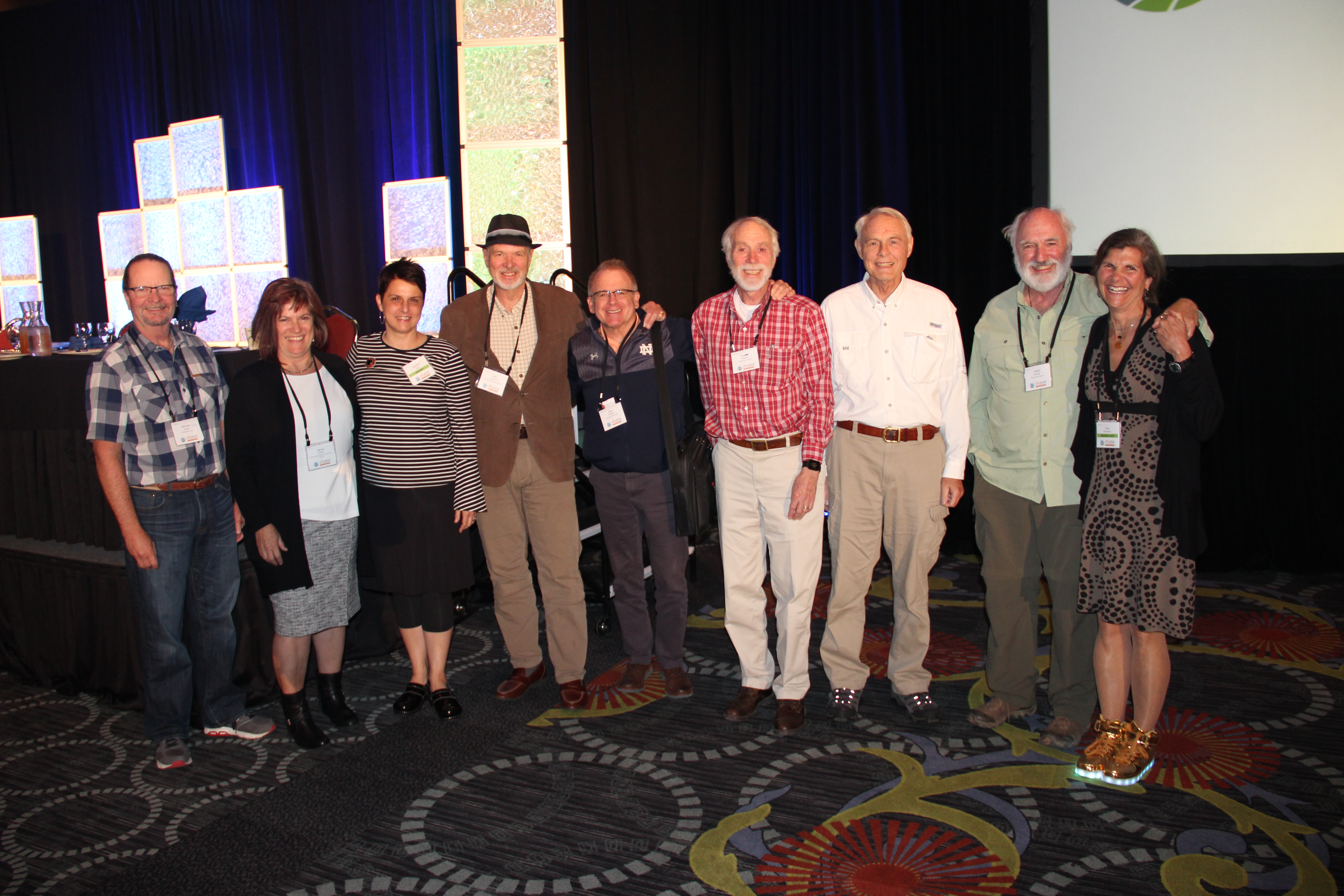
SFS Presidents past and present. Photo credit: Mark Wetzel
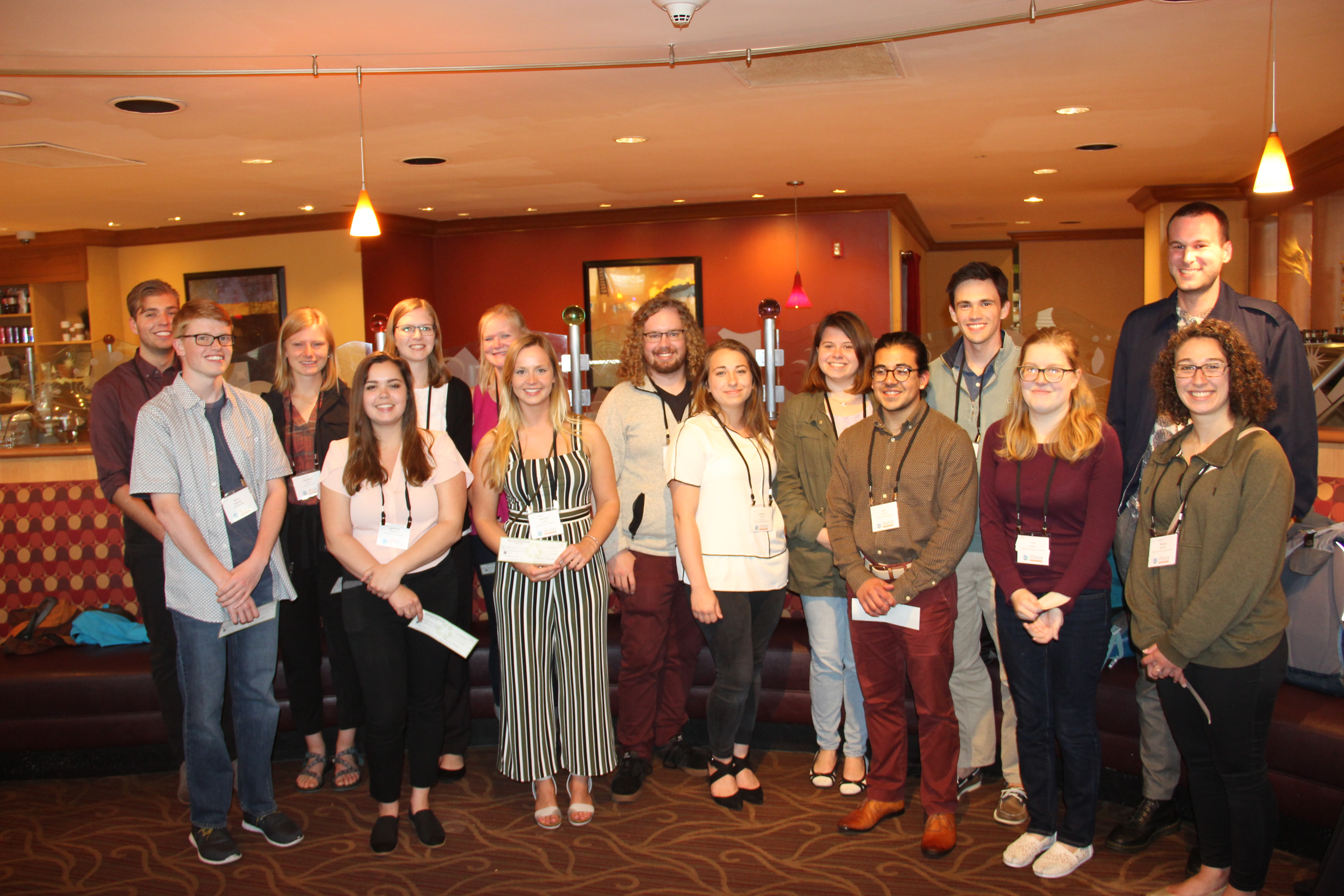
2019 SFS Student Endowment Awardees. Photo credit: Mark Wetzel
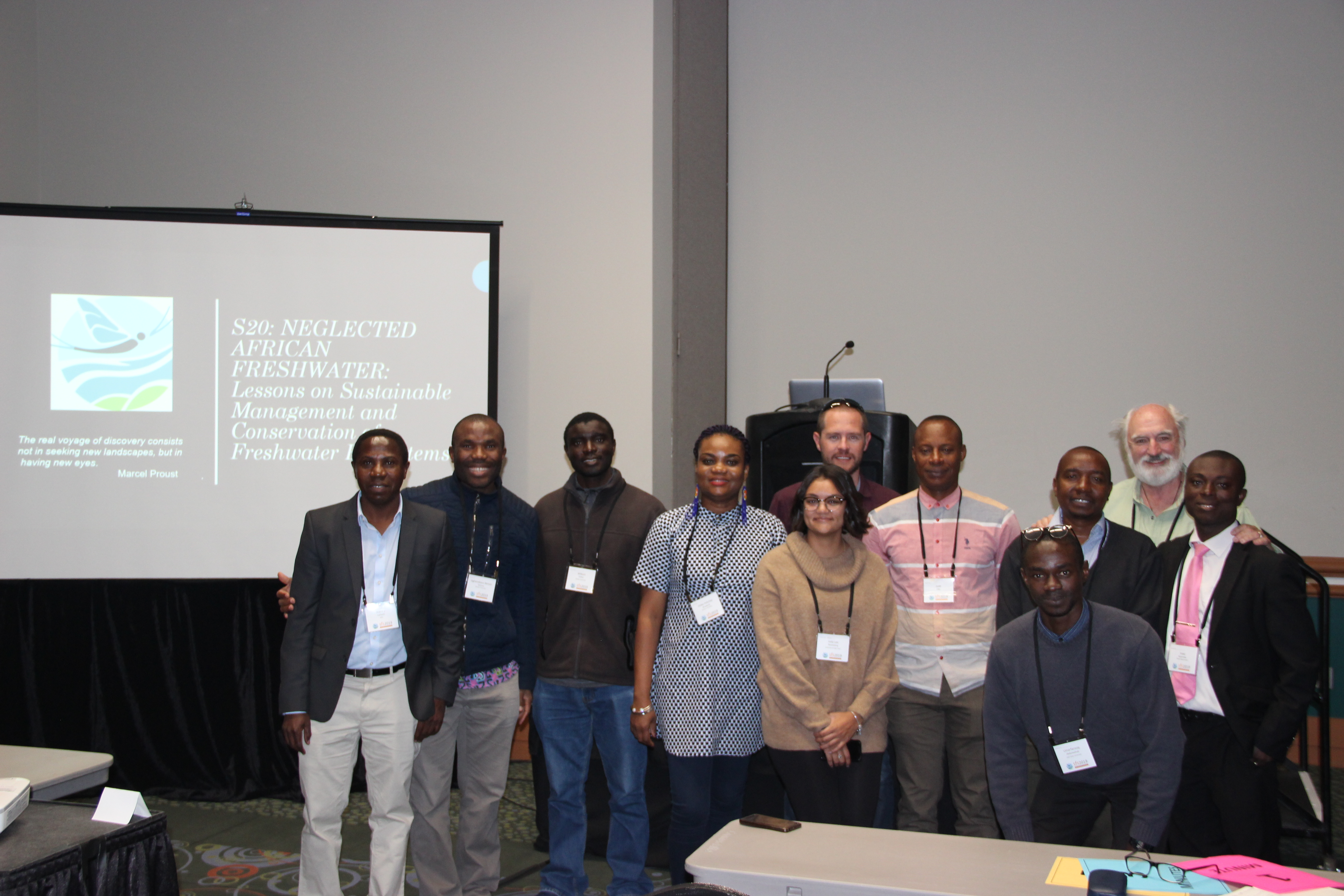
Presenters from the Neglected African Freshwater special session


